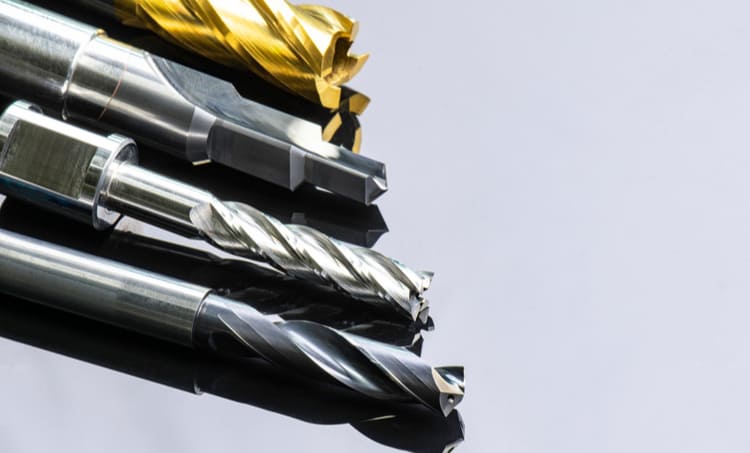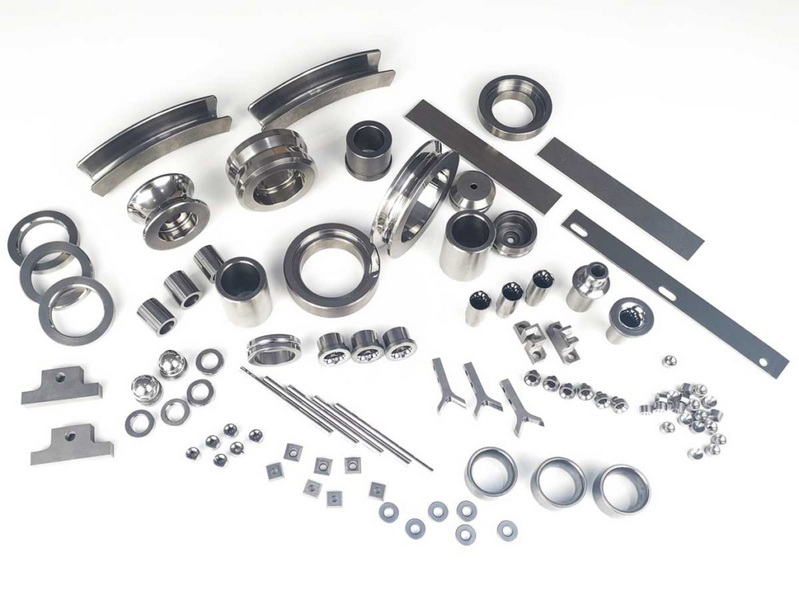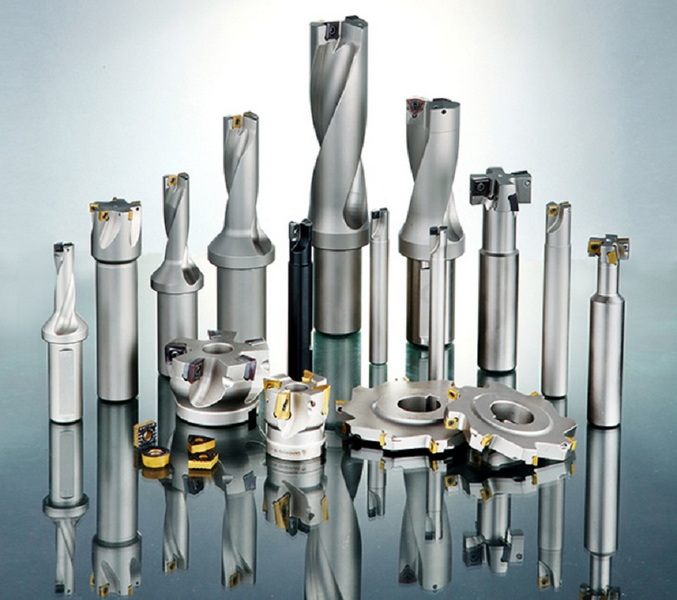Content Menu
● Introduction to Tungsten Carbide
● Physical and Chemical Properties
● The History and Discovery of Tungsten Carbide
● Industrial and Commercial Applications
● The Value of Tungsten Carbide
>> Market Value
>> Scrap Value
● Factors Influencing Tungsten Carbide Prices
● Tungsten Carbide in the Global Market
>> Market Trends
● Manufacturing Process of Tungsten Carbide
● Recycling and Scrap Value
>> Why Recycle Tungsten Carbide?
>> The Recycling Process
● Environmental Impact and Sustainability
● Investing in Tungsten Carbide
● Conclusion
● FAQ: Tungsten Carbide Worth and Use
>> 1. What determines the price of tungsten carbide scrap?
>> 2. Why is tungsten carbide more valuable than regular steel or stainless steel?
>> 3. How is tungsten carbide used in jewelry, and is it valuable as a precious metal?
>> 4. Can tungsten carbide be recycled, and what is its scrap value?
>> 5. What industries drive the demand for tungsten carbide?
Introduction to Tungsten Carbide
Tungsten carbide is a compound that has revolutionized modern industry. Combining the strengths of tungsten and carbon, this material is celebrated for its exceptional hardness, resilience, and versatility. If you are asking, “What is tungsten carbide worth?”—especially from the perspective of Trustway Metal or similar industry leaders—this comprehensive guide will provide you with an in-depth look at its value, uses, market dynamics, and future potential.

Physical and Chemical Properties
Tungsten carbide stands out due to its remarkable physical and chemical characteristics, which make it a preferred choice for demanding applications. Its properties include:
- Hardness: With a Mohs hardness rating of 9.0–9.5, it is nearly as hard as diamond.
- Density: At about 15.6–15.7 g/cm³, it is denser than most metals, including steel.
- Melting Point: Its melting point is approximately 2,870°C, allowing it to withstand extreme heat.
- Compressive Strength: It boasts an extremely high compressive strength, making it resistant to deformation.
- Corrosion Resistance: Tungsten carbide is chemically inert in most environments, except when exposed to strong acids.
- Thermal Conductivity: Its thermal conductivity is around 110 W/(m·K), which aids in dissipating heat efficiently.
The History and Discovery of Tungsten Carbide
The story of tungsten carbide dates back to the early 20th century. Tungsten itself was discovered in the late 18th century, but it wasn't until the 1920s that scientists at the German company Osram developed a method to combine tungsten and carbon, creating a material with unprecedented hardness and durability. This innovation soon transformed the manufacturing and mining industries, as tools made from tungsten carbide could cut through steel and other hard materials with ease.
The widespread adoption of tungsten carbide tools in the 1930s and 1940s marked a turning point for industrial productivity. Since then, ongoing advancements in powder metallurgy and sintering techniques have further enhanced its performance and expanded its applications.
Industrial and Commercial Applications
Tungsten carbide is indispensable across a vast range of industries due to its unique combination of strength, toughness, and resistance to wear. Some of its most prominent uses include:
- Manufacturing: Tungsten carbide is the material of choice for cutting tools, milling cutters, saw blades, and abrasives. Its durability allows for high-speed machining and precision manufacturing.
- Mining and Drilling: Drill bits, mining picks, and wear-resistant components rely on tungsten carbide to withstand the abrasive conditions of extracting minerals and drilling for oil and gas.
- Aerospace and Aviation: In these sectors, tungsten carbide is used for coatings on turbine blades, engine components, and other parts exposed to extreme stress and temperatures.
- Oil and Gas: Downhole tools, valves, and wear-resistant coatings in drilling equipment benefit from the toughness of tungsten carbide.
- Jewelry: Tungsten carbide rings and bracelets are prized for their scratch resistance, modern appearance, and hypoallergenic properties.
- Medical: Surgical instruments, dental burs, and orthopedic devices often incorporate tungsten carbide for its precision and longevity.
- Electronics: Specialized alloys and components in electronics utilize tungsten carbide for its conductivity and durability.

The Value of Tungsten Carbide
Market Value
The worth of tungsten carbide is influenced by several factors:
- Raw Material Costs: Tungsten is a rare and expensive metal, and its extraction and refinement are labor-intensive.
- Purity and Composition: Higher tungsten content and lower contamination increase the value of the material.
- Form: Clean solids such as inserts, end mills, and drill bits are more valuable than mixed or contaminated scrap.
- Market Demand: Demand is driven by industries such as automotive, mining, aerospace, and energy.
As of 2025, the global market for tungsten carbide is valued at over $19 billion, with projections indicating continued growth due to expanding industrial applications and technological advancements.
Scrap Value
Tungsten carbide scrap is highly sought after in the recycling market. Its value depends on purity, form, and market conditions:
- North America: Scrap prices typically range from $6 to $10 per pound for clean, uncontaminated material.
- China and Europe: Prices can reach $40–$45 per kilogram, especially for high-purity scrap.
Bulk quantities and clean, sorted scrap command the highest prices, while contaminated or mixed scrap fetches less.
Factors Influencing Tungsten Carbide Prices
Several factors dynamically affect the price of tungsten carbide in the global market:
- Tungsten Content: The higher the tungsten content, the greater the value.
- Binder Content: Tungsten carbide often contains cobalt or nickel as a binder. Scrap with higher cobalt content is generally more valuable.
- Market Demand: Seasonal trends, such as increased manufacturing in Q4, can drive up prices.
- Geopolitical Factors: China controls about 80% of the world's tungsten supply, making prices sensitive to export policies, trade relations, and political stability.
- Form and Condition: Clean, solid pieces are more valuable than contaminated or mixed scrap.
- Technological Advances: Innovations in manufacturing and recycling can impact demand and pricing.
- Environmental Regulations: Stricter environmental standards can affect mining and processing costs, influencing overall prices.
Tungsten Carbide in the Global Market
The demand for tungsten carbide is truly global, with key markets in:
- China: The largest producer and consumer, with significant influence over global supply and pricing.
- United States and Europe: Major users in aerospace, automotive, and manufacturing sectors.
- Emerging Economies: Rapid industrialization in countries like India, Brazil, and Southeast Asia is fueling demand for durable tools and components.
Market Trends
- Technological Innovation: Additive manufacturing, advanced coatings, and improved sintering processes are expanding the uses and efficiency of tungsten carbide.
- Sustainability Initiatives: Increased focus on recycling and sustainable sourcing is shaping market dynamics.
- Supply Chain Disruptions: Geopolitical tensions and logistical challenges can lead to price volatility.
Manufacturing Process of Tungsten Carbide
The production of tungsten carbide is a complex process involving several key steps:
1. Ore Extraction: Tungsten is extracted from minerals such as scheelite and wolframite.
2. Refining: The ore is refined to produce tungsten oxide, which is then reduced to tungsten powder.
3. Carburization: Tungsten powder is mixed with carbon and heated to form tungsten carbide powder.
4. Mixing with Binder: The tungsten carbide powder is blended with a binder, usually cobalt or nickel, to enhance toughness.
5. Pressing and Shaping: The mixture is pressed into the desired shape using molds or dies.
6. Sintering: The pressed parts are heated in a furnace, causing the particles to bond and form a dense, solid material.
7. Finishing: The sintered parts are ground, polished, or coated as needed for their final application.
This process allows for precise control over the material's properties, ensuring that tungsten carbide products meet the exacting standards required by industry.
Recycling and Scrap Value
Why Recycle Tungsten Carbide?
- Resource Conservation: Tungsten is a finite resource, and recycling reduces the need for new mining.
- Economic Value: Recycled tungsten carbide retains much of its original value and can be used to produce new tools and components.
- Environmental Benefits: Recycling reduces waste, energy consumption, and environmental impact compared to extracting and processing virgin material.
The Recycling Process
1. Collection and Sorting: Scrap is collected and sorted by grade, form, and level of contamination.
2. Processing: Various methods, such as the zinc process or chemical leaching, are used to separate the tungsten carbide from binders and impurities.
3. Refining: The recovered tungsten carbide is milled and blended with virgin material to produce new products.
Environmental Impact and Sustainability
Tungsten carbide production and recycling have significant environmental implications:
- Mining Impact: Tungsten mining can cause habitat destruction, water pollution, and energy consumption.
- Recycling Advantages: Recycling tungsten carbide dramatically reduces the environmental footprint by conserving resources and reducing waste.
- Regulatory Compliance: Many countries have implemented regulations to ensure responsible sourcing and processing of tungsten and its compounds.
- Sustainable Sourcing: Companies are increasingly seeking certified, conflict-free tungsten to meet both legal and ethical standards.
Investing in Tungsten Carbide
Tungsten carbide is not just a material for industrial use—it is also an attractive investment:
- Strategic Importance: As a critical material for defense, aerospace, and high-tech industries, tungsten carbide is considered a strategic resource.
- Price Stability: While subject to market fluctuations, tungsten carbide's value is generally more stable than many other metals due to consistent industrial demand.
- Recycling Opportunities: Investing in tungsten carbide recycling can yield strong returns, given the high value of scrap and the growing emphasis on sustainability.
- Portfolio Diversification: For investors seeking exposure to the materials sector, tungsten carbide offers diversification and potential for long-term growth.
Conclusion
Tungsten carbide is a cornerstone of modern industry, prized for its unmatched hardness, durability, and versatility. Its value is reflected not only in the price of raw material and finished products but also in its robust recycling market and strategic importance. Whether you are a manufacturer, recycler, investor, or consumer, understanding the worth of tungsten carbide empowers you to make informed decisions in a dynamic global marketplace. As technology advances and sustainability becomes ever more critical, the significance and value of tungsten carbide are set to grow even further.

FAQ: Tungsten Carbide Worth and Use
1. What determines the price of tungsten carbide scrap?
The price of tungsten carbide scrap depends on its tungsten content, purity, form (clean solids vs. contaminated scrap), market demand, and geopolitical factors. Clean, high-purity scrap commands the highest prices, while mixed or contaminated material is worth less.
2. Why is tungsten carbide more valuable than regular steel or stainless steel?
Tungsten carbide is much harder, denser, and more wear-resistant than steel, making it essential for applications where steel would quickly wear out or fail. Its unique properties justify its higher value in industrial and commercial markets.
3. How is tungsten carbide used in jewelry, and is it valuable as a precious metal?
Tungsten carbide is popular in jewelry, especially rings, for its scratch resistance and modern appearance. While it is not classified as a traditional precious metal like gold or platinum, its value comes from its durability and distinctive look.
4. Can tungsten carbide be recycled, and what is its scrap value?
Yes, tungsten carbide is highly recyclable. Scrap values range from $6–$10 per pound in North America and even higher in other regions, especially for clean, uncontaminated material. Recycling tungsten carbide is both economically and environmentally beneficial.
5. What industries drive the demand for tungsten carbide?
Key industries include manufacturing (cutting tools and abrasives), mining, oil and gas, aerospace, automotive, and jewelry. Growth in these sectors directly impacts the demand and market value of tungsten carbide.
















